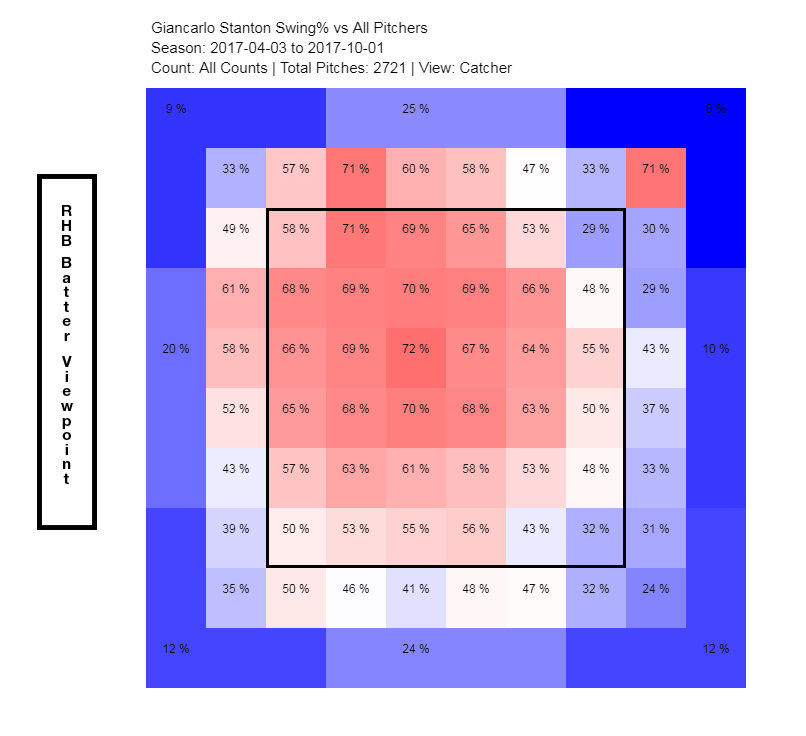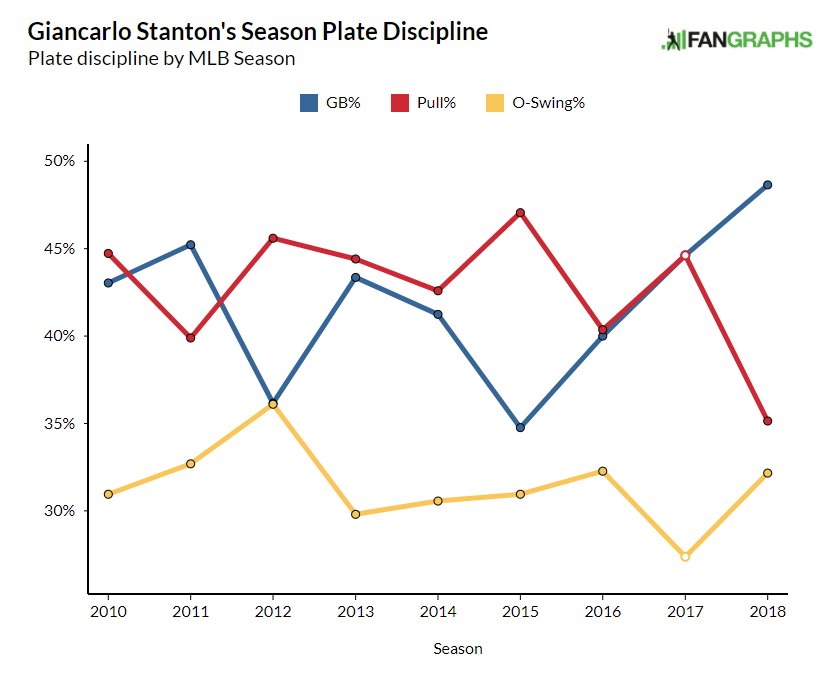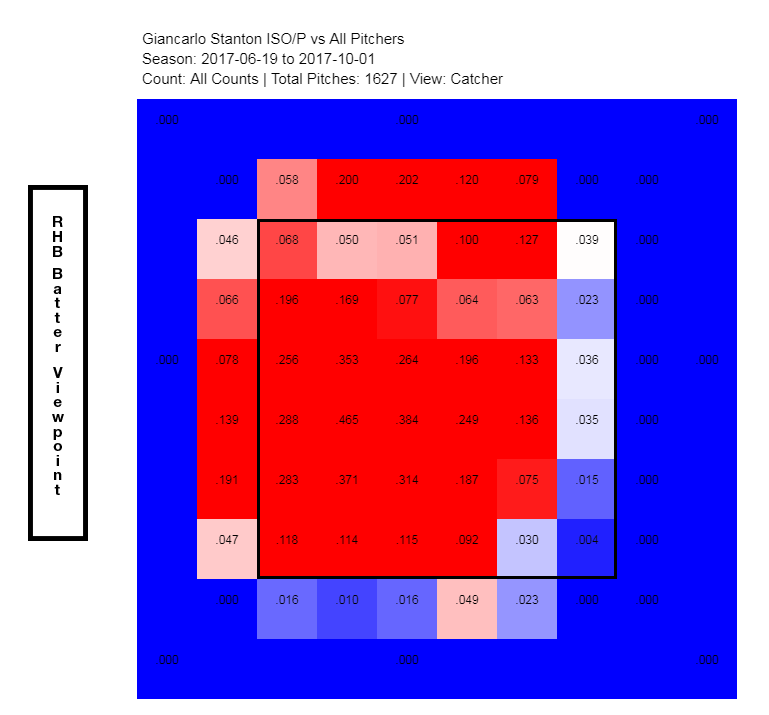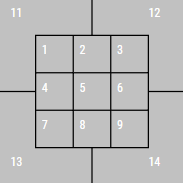Giancarlo Stanton has a hole in his swing
Following Giancarlo Stanton's tour de force performance at Rogers Centre on Opening Day, when he murdered two baseballs in his New York Yankees debut, we predicted on this very app (and website - hi, Dad!) that the reigning National League MVP would hit 94 home runs this season. It was facetious, of course, but it evinced our supreme confidence that Stanton would go completely berserk this season, especially with half his games coming in that Bronx bandbox.
Over the past three weeks, that confidence has waned a bit.
Since his auspicious Yankees debut, Stanton has more five-strikeout games (two) than home runs (one). Heading into Thursday's series opener against the Toronto Blue Jays, the four-time All-Star is slashing .197/.293/.409 (95 wRC+) with a career-worst 38.7 percent strikeout rate. He doesn't have a hit since last Thursday. Cumulatively, by win probability added, he has hurt the Yankees' chances of not losing this year. Mired in this ghastly stretch, Stanton is getting booed at Yankee Stadium, and his new manager intimated earlier this week that he's considering moving him down in the batting order.
So what's behind this mess? Well, let's take a look.
En route to his mindboggling 59-homer campaign last year, Stanton became much more selective at the plate, taking fewer swings overall and chasing pitches outside the strike zone at the lowest rate (27.9 percent) of his career. His strikeout rate plummeted to a career-low 23.6 percent and he enjoyed a considerable uptick in his walk rate (12.3 percent) from the previous two seasons, but he was still aggressive enough in the zone to hit all those home runs - and 32 doubles, also a career high.

Now let's take a look at his swing breakdown from the first three weeks of the 2018 campaign:

Clearly, both the discipline (i.e. not swinging at balls) and selectiveness (i.e. swinging only at the strikes he wants to hit) Stanton demonstrated last year have regressed. As Dr. Seuss might have put it: He's swinging at pitches in on his fists. He's swinging at pitches up at his chest. He's swinging at pitches below his knees. "Giancarlo!" they pleaded. "Stop chasing that, please!"
The results aren't pretty. When he does manage to make contact, he just isn't squaring up the baseball, and even though he's been super aggressive on pitches up and in - and on the inner third of the plate in general - he isn't pulling the baseball either. Right now, Stanton's expected weighted on-base average, derived from exit velocity and launch angle, is just .334 - a whopping 76 points lower than his 2017 wOBA (.410). It's hard to hit for power, after all, when you're spanking everything into the ground:

So, at this point, the question is why has Stanton become so overly aggressive? Why is he so keen to attack inside pitches that he'll offer at non-strikes? Well, it may have something to do with an adjustment he made last year. About a month before the All-Star break, Stanton made a significant change to his swing, adopting an aggressively closed stance because, as he put it in June, "When I would strike in a closed position I hit the ball hard." The results speak for themselves:
| Split | OPS | ISO | Exit velocity (MPH) | xWOBA |
|---|---|---|---|---|
| April 3 - June 18 | .900 | .265 | 90.7 | .360 |
| June 19 - Oct. 1 | 1.083 | .411 | 92.8 | .422 |
After changing his stance June 19, Stanton was pretty much superhuman, smashing 42 homers in his final 93 games. As he was bashing his way to the NL MVP award, however, acute observers would've noticed that pitches down and away started to give him some serious trouble. (No hitter alive craves a diet of down-and-away pitches, of course, but Stanton became especially vulnerable to them post-adjustment.)

The data culled from Baseball-Savant also suggests Stanton couldn't consistently drive pitches located down and away after tweaking his stance:
| Split (down-and-away) | Exit velocity (MPH) | xWOBA |
|---|---|---|
| April 3 - June 18 | 95.8 | .397 |
| June 19 - Oct. 1 | 89.1 | .256 |
Fast forward, like, six months: Stanton gets traded to New York for a handful of magic beans, most every pundit anoints the Yankees the 2018 American League East champs, yada yada yada. They didn't realize, though, that there's a hole in Stanton's swing. Opposing pitchers did. Take a look at how Stanton has been pitched this year:

Against pitches down and away, Stanton has managed a .283 wOBA this year, launching one massive home run - a 434-foot blast off Tyler Clippard on Opening Day - but otherwise failing to hit the ball with authority: The other four balls he's put in play had an average exit velocity of 83.05 miles per hour. Amazingly, that's an improvement over what he did against those same pitches during the second half of 2017, but it's increasingly clear that he's still vulnerable in that part of the strike zone. (By exit velocity, even with marginal improvement this year, it remains Stanton's least favorite spot to get pitched since changing his stance.)
Average exit velocities by location (June 19, 2017 - April 18, 2018)

| Zone # | Exit velocity (MPH) |
|---|---|
| 3 | 104.6 |
| 5 | 101.6 |
| 7 | 98.8 |
| 8 | 98.5 |
| 2 | 95.6 |
| 4 | 95.6 |
| 6 | 93.0 |
| 1 | 90.0 |
| 9 | 89.0 |
The issue, when it comes down to it, is that these pitches are still strikes. Stanton can lay off them early in the count, if he's so inclined, but that still puts him behind, opening up more sequencing possibilities for opposing pitchers and ultimately making it harder for him to get good pitches to hit. And in two-strike counts, he has no choice; he has to swing at pitches that he can't really drive. It's a problem.
Earlier this week, Stanton told reporters it's incumbent on him to "find a way to get out of it," this unrelenting slump. Fixing that hole in his swing is probably a good start.